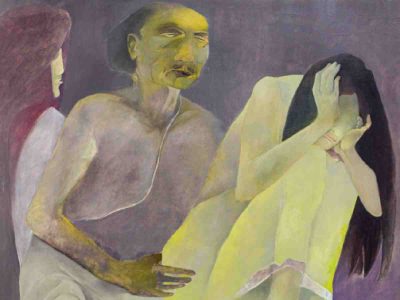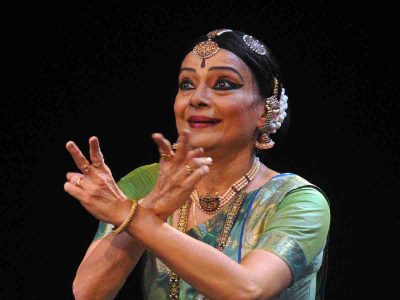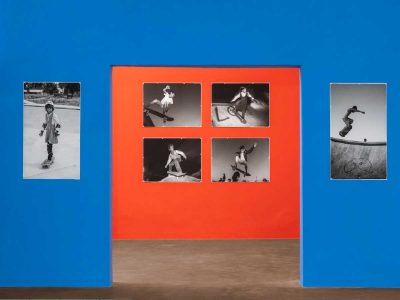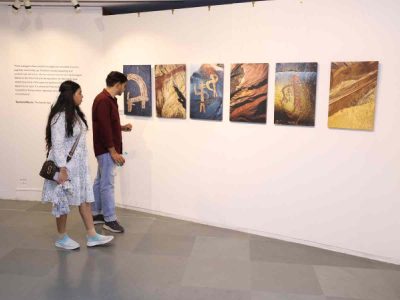Tiny turtles fashioned from seashells, a leather puppet depicting Ravana, a house narrating old folk tales of Rajasthan, a wooden monkey scaling a rope, and yaks moulded from dough – these were among the traditional toys and dolls showcased at Putul exhibition at the India International Centre.
The collection belonged to Asani Bhaduri, a professor of Molecular Biology at the University of Delhi and a toy collector. Bhaduri, who is also an ardent bird-watcher, developed interest in toys and dolls of India from his father Agnibharna Bhaduri, who is an avid toy collector and researcher.
For visitors, the exhibition was a walk down the memory lane. Each of them was intrigued not only by the collection, but also how integral some of the exhibits were to parts of their childhood that they seemed to have forgotten.
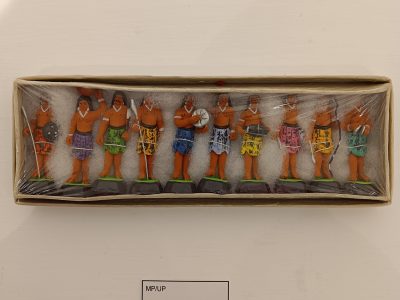
The exhibition, which ran from December 6 to 12, showcased around 75 toys and dolls from different Indian states and union territories. It also aimed to popularise toys and dolls that have gone into obscurity after the introduction of plastic toys in the country.
“We have had a very rich tradition of toys in India. Even in this collection, which exhibits toys from almost all the states and union territories of the country, you can see that toys are not only made of clay, but also wood carvings, papier-mache, metal, tin, stone carving, leather, wax, clothes, and seashells,” Bhaduri said.
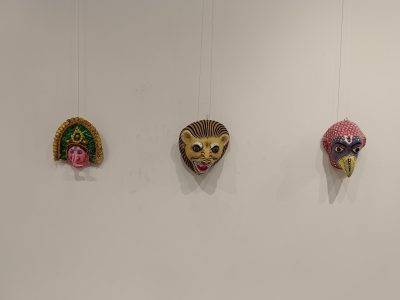
“The idea was to show people the culture of toys and dolls that we had and still have.”
The toy-makers of India have imbibed tradition, flowed with the times, represented myths and history while maintaining creativity. However, the scenario is not what used to be in the past, according to Bhaduri.
There is lack of enthusiasm from both consumers and toy-makers. While children are leaping from plastic toys to phygital (physical+digital) games, artists are leaving their age-old profession in search of jobs in metro cities.
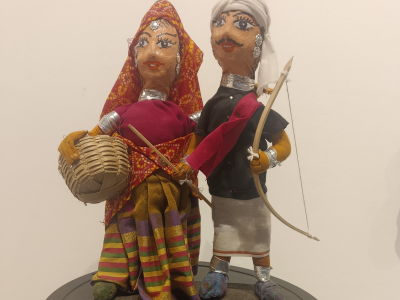
“The exhibition also encourages consumers, especially parents and grandparents, to go back to our roots and the tradition of toys and dolls in India,” he said.
“Most of these toys that are exhibited here come at a very low price and are sustainable. So, they do not pose any harm to the environment.
“We have had a continuous history of toy-making over the last 2,000 years or maybe more, but we stopped that practice in the last 75 years,” he added.
Bhaduri said that even though there are different pavilions at various fairs and festivals that showcase the traditional toys, not many cover the entire heritage of India. He lamented the lack of documentation and preservation of toys in the country.
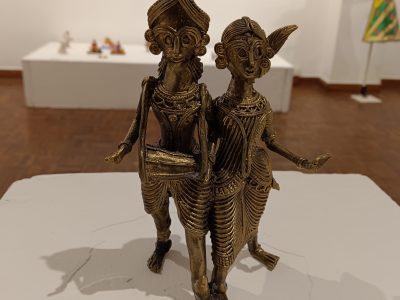
He shared that some private collectors, including artists, do not showcase their collection due to difficulties in packaging and exhibition due to the fragile nature of most traditional toys.
“Many artists all over India have their own collections. For instance, Jatin Das is also a collector of many handicrafts and toys. But you know people do not showcase them because toys are very fragile,” Bhaduri said.
The curated display not only offered a visual feast but also stirred deep emotional connections. It served as a cultural time capsule, allowing both young and old to appreciate the timeless beauty and cultural significance of the toys. As visitors explored the exhibition, they were transported down the enchanting lane of nostalgia, reminiscing about the simplicity and joy of childhood.
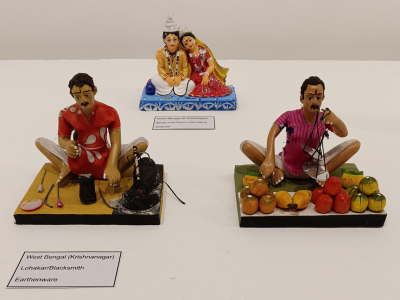
“We have people from different backgrounds and age-groups. We have had young parents coming with their children, grandparents talking about their childhood, senior bureaucrats and administrators taking out time to visit the exhibition, curators asking about the exhibition; almost all of them recollected the memories associated with the toys,” Bhaduri said.
Some of the toys had religious significance too. For instance, the elephant made of clay is used for prayers during Chhat Puja in Bihar or the toys from Ladakh made of dough are used as offerings during new year prayers. The Kavad toy from Rajasthan depicts stories of Mahabharata and is usually accompanied by folk music.
The exhibition also held elephant toys from different regions such as Rajasthan (ceramic), Bihar (earthen), West Bengal (terracotta), Tamil Nadu (earthen), Odisha (wood), Uttar Pradesh (terracotta), Pondicherry (terracotta), and Kerala (wood).
“There are also miniature clay toys from Lucknow that are very fascinating and unique. It is almost a lost art because there are no artists who can make these toys. Even at present, the quality is not the same,” Bhaduri said.
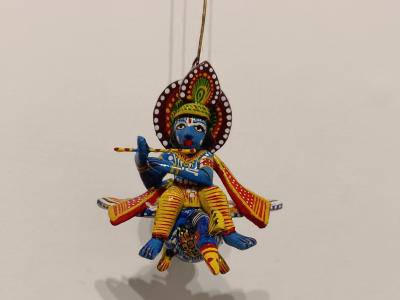
“Similarly, in West Bengal, there is a place called Illambazar, from where toys have vanished.”
There is little documentation of India’s traditional toys and prolific toy-makers. The lack of preservation or research about the history and socio-cultural aspects of toy-making also worsens the situation. Bhaduri is trying to fill these gaps.
“Many people came and asked where they could find these toys. We told them about the places and online stores, if any,” he said.
This proved that the exhibition was a success.


